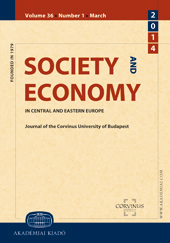Does Private and Cost-Priced Higher Education Produce Poor Quality? An Empirical Analysis Based on Labour-market-success Indicators of Hungarian Higher-education Graduates
Does Private and Cost-Priced Higher Education Produce Poor Quality? An Empirical Analysis Based on Labour-market-success Indicators of Hungarian Higher-education Graduates
Author(s): Péter Galasi, Júlia VargaSubject(s): Education, Higher Education
Published by: Akadémiai Kiadó
Keywords: state-funded and cost-priced higher education; returns on education; quality of schools; state-funded and cost-priced higher education;
Summary/Abstract: Since the beginning of the transition, Hungarian higher education has been undergoing continuous transformation. The number of students in higher education more than doubled, and this was accompanied by the appearance of newly founded church-run and private higher education institutions and newly established cost-priced places. The paper focuses on the potential negative effects private and cost-priced higher education might have on the quality of education and students, by making use of labour-market-success indicators (wages and labour-market status) with the help of multivariate estimation techniques. A unique data set, the Second FIDÉV Survey, is used which provides information about the September 2000 labour-market situation of persons graduated from higher education in 1999. The results suggest that education at cost-priced, state-funded places and private higher-education institutions provides essentially the same level of knowledge or produces the same educational quality as measured by wages. No negative effect has been detected as for the labour-market status of ex-students. Students graduating from cost-priced places and private institutions experience the same unemployment probability, whereas the overall employment probability of students graduated from cost-priced places is higher than that of persons studied at state-funded ones. One can conclude that although the opportunity of establishing more and more cost-priced places might have been advantageous for higher-education institutions so as to increase their revenues, they have shown some self-restraint in this respect, and there is no sign that the increase in cost-priced places has led to lower-quality workers.
Journal: Society and Economy. In Central and Eastern Europe ǀ Journal of the Corvinus University of Budapest
- Issue Year: 24/2002
- Issue No: 3
- Page Range: 333-361
- Page Count: 29
- Language: English

